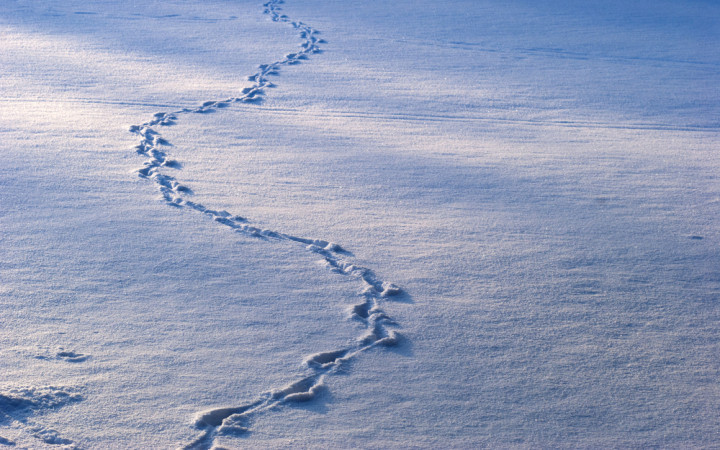Today’s Wonder of the Day was inspired by Kaveen. Kaveen Wonders, “Do all animals leave tracks?” Thanks for WONDERing with us, Kaveen!
Did you know that the world around you — whether it's your backyard, a neighborhood park, or even your school playground — is full of animals? It's true…even if you can't always see them.
If you know what to look for, though, you just might be able to tell what animals have been hanging around and where they went. No matter how small they may be, all animals leave some evidence behind when they move through the world.
You can track animals in your backyard or a local park. For a real adventure, though, visit a nearby state park or forest and hit the trails. It can be a lot of fun to be an animal detective, searching for footprints, paw prints, and hoof prints!
As you move, your feet leave tell-tale footprints that show where you've been. Animals are the same way. Of course, you can't always see these tracks easily. For example, tracking a rabbit hopping through thick grass would not be an easy task.
Sand and hard-packed dirt can make it easier to see animal tracks. However, it's much easier to track animals traveling through snow or mud. So you might want to wait until just after it rains or snows to give tracking a try.
Animal tracking isn't easy, but with a little forethought and some basic information, you can identify some basic animal tracks. Before you set out on your tracking adventure, think about the kinds of animals you know live in your area.
For example, if you know that squirrels, rabbits, and birds live in your area, it's likely that you'll find tracks from some or all of these animals. Likewise, if you can't identify a particular track, it's probably not from a hippopotamus, giraffe, or zebra…unless you live in Africa!
So let's say you find an animal track. How can you tell what animal made it? Here are a few clues you can use to unravel the mystery.
If the track has four toes on both the front and back feet, you're probably looking at a track from a member of the dog family (dog, coyote, wolf, or fox) or the cat family (cat, lynx, or bobcat). If the track has small, triangular marks in front of the toes, those are claw marks, which mean the track is probably from a dog, not a cat.
If the track has four toes on the front foot and five toes on the back foot, it's from a rodent, such as a mouse, chipmunk, squirrel, woodchuck, or porcupine. Five toes on each of the front and back feet point toward a raccoon, a bear, a beaver, an opossum, or a member of the weasel family, such as a weasel, badger, skunk, or otter. Two-toed tracks are usually left by deer.
Animals that hop, such as squirrels and rabbits, often leave interesting tracks. As they hop along, their bigger back feet land ahead of their smaller front feet.
When you find tracks, try to follow them as far as you can. In which direction was the animal moving? Where do you think it was going? If you're having trouble following the tracks, one trick you can use is to keep the print between you and the Sun. Doing so allows the light to cast shadows in the print to make it stand out more from its surroundings.




